Surface water management planning: guidance (2018)
Guidance to assist the responsible authorities in preparation of Surface Water Management Plans (SWMPs) to help with the management of surface water flooding.
Appendix 4 List of potential actions
Table A4.1 List of potential non-structural actions
| Action | Action description | References | |
|---|---|---|---|
 |
Land use planning policy - adhere to existing | Ensure that new development is not at risk of surface water flooding and does not increase flooding elsewhere. To achieve this, surface water (drainage and flooding) should be managed sustainably above ground and should integrate with and enhance the urban landscape (i.e. should form part of the ‘green and blue’ infrastructure of the development). | Scottish Government’s Scottish Planning Policy: http://www.gov.scot/Publications/2014/06/5823 Scottish Government’s Planning Advice: http://www.gov.scot/Topics/Built-Environment/planning/publications/pans Scottish Government (2011) Green Infrastructure: Design and Placemaking: www.scotland.gov.uk/Publications/2011/11/04140525/0 Glasgow and Clyde Valley Green Network web guidance on integrating green infrastructure and case studies in the Scottish land use planning system: www.gcvgreennetwork.gov.uk/igi/introduction Susdrain resource on sustainable drainage http://www.susdrain.org/ |
| Land use planning policy - implement more stringent policies where required | New developments may have the potential to reduce existing flood risks. Where this is possible local policies (e.g. in supplementary planning guidance) to implement this should be put in place for development planning and development management. | ||
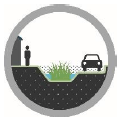 |
Clarify responsibilities for new surface water management infrastructure | Clarify ownership and vesting processes for all surface water management infrastructure in new developments (drainage and flooding up to 1:200 year rainfall event), and set out how they will work with the land use planning system to meet required planning policies. | |
| Clarify responsibilities for existing surface water management infrastructure (including SUDS) | Clarify and agree ownership and responsibilities for maintaining existing surface water management infrastructure (including SUDS). | ||
 |
Emergency response plans | Use information about surface water flood risk to improve emergency response plans. | |
| Action | Action description | References | |
 |
Study - improve understanding | Carry out modelling and other assessments to improve knowledge of flood hazards and risk (adverse impacts). | SEPA’s Flood modelling guidance for responsible authorities: http://www.sepa.org.uk/media/219653/flood_model_guidance_v2.pdf CIWEM (2009) Integrated Urban Drainage Modelling Guide 2009: www.ciwem.org/wp-content/uploads/2016/05/Integrated-Urban-Drainage-Modelling-Guide.pdf |
| Study - option appraisal and design | Further study to appraise management options in more detail or take a preferred option to detailed design. | See Chapter 7 Option appraisal. Scottish Government (2011) Principles of appraisal: a policy statement: www.scotland.gov.uk/Publications/2011/07/20125533/0 Scottish Government (2016) Options appraisal for flood risk: guidance to support SEPA and the responsible authorities: http://www.gov.scot/Publications/2016/06/4633 |
|
| Study - improve information on surface water flood events | Improve data collection on surface water flood events when they occur, to improve knowledge of surface water flood risk and improve confidence in surface water flood models. | SEPA can be contacted for advice on collecting information on flood events. | |
 |
Self-help - business continuity planning | Increase the resilience of individuals and businesses through self-help actions, helping to ensure that people, communities and businesses are prepared for flooding, know what action they can take and can recover more quickly afterwards. | Scottish Government’s research on assessing the flood risk management benefits of property level protection: http://www.gov.scot/Topics/Environment/Water/Flooding/resources/research |
| Self-help - community flood action groups and resilient community plans | |||
| Self-help - flood insurance | |||
| Self-help - awareness- raising | |||
| Self-help - property-level protection | |||
| Self-help - property-level resilience (retrofit) | |||
| Action |
Action description |
References |
|
 |
Flood forecasting and warning | Develop surface water flood forecasting, alerts and warning schemes. SEPA issues surface water flood forecasting and alerts but does not currently provide surface water flood warnings. Other authorities may contact SEPA for advice on putting in place any local schemes. | CREW’s surface water flood forecasting for urban communities: http://www.crew.ac.uk/publication/surface-water-flood-forecasting-urban-communities-review |
 |
Asset management and maintenance | Review and change existing systems for inspecting and maintaining surface water management infrastructure, e.g. culverts, SUDS, sewers and road drainage. | |
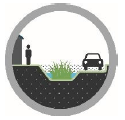 |
Watercourse management and maintenance | Review and change existing systems for inspecting and maintaining urban burns. | |
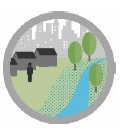 |
Relocation | Relocate properties or infrastructure away from flood risk areas. |
Table A4.2 List of potential structural actions
| Managing water on the surface |
|||
|---|---|---|---|
| Action |
Action description |
References |
|
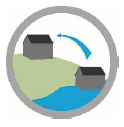 |
Infiltration (and evapotranspiration) |
For managing ‘every day rain’ – maximise the use of permeable surfaces and plants to allow rain to infiltrate the ground and evaporate into the atmosphere where it lands (at source), creating little or no surface water run-off. Generally, most above-ground management of surface water will require a combination of source control, conveyancing and storage in all rainfall events. |
Scottish Government (2011) Green Infrastructure: Design and Placemaking: www.scotland.gov.uk/Publications/2011/11/04140525/0 Glasgow and Clyde Valley Green Network integrating green infrastructure and case studies: www.gcvgreennetwork.gov.uk/igi/introduction Greenspace Scotland (2011) Scotland’s greenspace map https://www.greenspacescotland.org.uk/healthier Susdrain resource on sustainable drainage: http://www.susdrain.org/
Examples of managing surface water and enhancing the urban landscape:
|
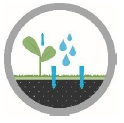 |
Conveyance |
For managing ‘usual rainfall’ - collect, delay and convey rainfall and resultant surface water above ground to watercourses using green infrastructure techniques. Generally, most above-ground management of surface water will require a combination of source control, conveyancing and storage in all rainfall events. |
|
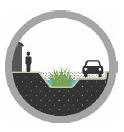 |
Storage |
For managing ‘extreme rainfall’ - delay, store and convey surface water above ground to watercourses using green infrastructure techniques. Generally, most above-ground management of surface water will require a combination of source control, conveyancing and storage in all rainfall events. |
|
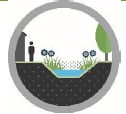 |
Restoring urban watercourses |
Restore urban watercourses (e.g. restoring floodplains and deculverting) to reduce flooding from the watercourse itself and provide more opportunities to convey surface water into the natural environment. |
SEPA’s Natural Flood Management Handbook: http://www.sepa.org.uk/media/163560/sepa-natural-flood-management-handbook1.pdf |
| Managing water on the surface |
|||
| Action | Action description | References | |
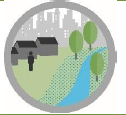 |
Urban watercourse engineering | Put in place, for example, storage (on-line or off-line storage), embankments, walls or flood diversion channels in urban burns, all of which can reduce flood risk from the watercourse itself. | |
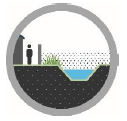 |
Run-off reduction strategy | Develop what is typically a long-term plan for making whole urban areas more ‘green’ and permeable and reducing impermeable and ‘grey’ surfaces (often referred to as de-paving strategies). Using green infrastructure techniques allows more rain to infiltrate the ground and encourages evapotranspiration in the atmosphere, reducing run-off rates and volumes. This can often help to manage frequent and usual rainfall events, mitigate urban creep and adapt to climate change. Because this strategy is most effective for frequent and usual rainfall events, Scottish Water and local authorities should work together to realise multiple benefits. |
UKWIR (2014) Framework for developing a stormwater management business case: https://www.ukwir.org/eng/UK-water-industry-research (Provides information on assessing benefits and costs of run-off reduction and reducing water in sewerage systems.) Welsh Water RainScape (project to reduce surface water in the sewers): http://www.dwrcymru.com/en/My-Wastewater/RainScape.aspx Examples of run-off reduction strategies and reducing surface water in the sewer:
|
 |
Reducing surface water in the sewer | Identify opportunities to reduce surface water in sewers. Scottish Water is responsible for the sewer network and should therefore be contacted regarding any proposals. For example, Scottish Water may identify opportunities to meet sewer network requirements, while local authorities may see opportunities when managing surface water flooding or where sewer network overflows may be contributing to surface water flooding problems. There are many different ways to reduce surface water in the sewer and Scottish Water and local authorities should co-ordinate work to realise multiple benefits. |
|
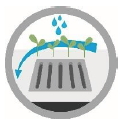 |
Land management | Implement land management actions that reduce the rate and volume of run-off. Run-off from more rural land (‘the urban fringe’) can flood homes, businesses and infrastructure directly and, by significantly increasing flows to the urban area, drainage systems and watercourses can raise flood risk further downstream. |
SEPA’s Natural Flood Management Handbook: http://www.sepa.org.uk/media/163560/sepa-natural-flood-management-handbook1.pdf |
| Managing water below ground |
|||
 |
Action | Action description | References |
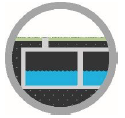 |
Underground storage | Divert surface water to storage tanks or by providing storage in the existing drainage / flood management network. | |
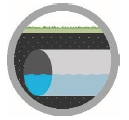 |
Underground conveyance | Increase capacity or build new underground pipes for surface water. | |
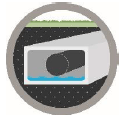 |
Modification of culverted watercourses | For example, increase the capacity of culverted watercourses or divert culverted watercourses. | |
Contact
Gordon Robertson: Flooding_Mailbox@gov.scot
There is a problem
Thanks for your feedback